Views: 2 Author: https://schoolofwoodwork.com/veneer-the-background-basics/ Publish Time: 2022-03-06 Origin: https://schoolofwoodwork.com/veneer-the-background-basics/
The art of creating wood veneer lies in the cutting method, which dictates the final grain pattern, texture, and aesthetic of the thin wood sheets. There are three primary techniques—rotary cutting, sliced cutting, and rift cutting—each producing a distinct look for different applications. Understanding these methods is key to choosing the right veneer for your woodworking projects.
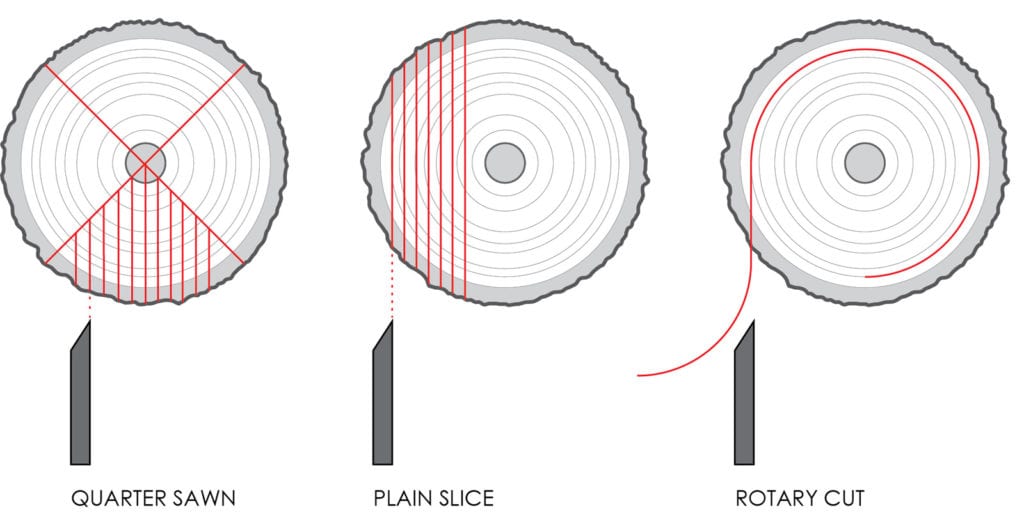
How it's done: A whole log is mounted on a lathe and rotated against a sharp blade, peeling off a continuous sheet of veneer, much like unrolling a roll of paper.
Appearance: This process creates a broad, bold, and random grain pattern. The veneer can be wide enough to produce a full, single-piece face.
Benefits: It is the most economical method, as it maximizes yield from the log.
Best for: Cost-effective projects where a dramatic, non-uniform grain is desired, such as in plywood cores and some lower-end furniture.
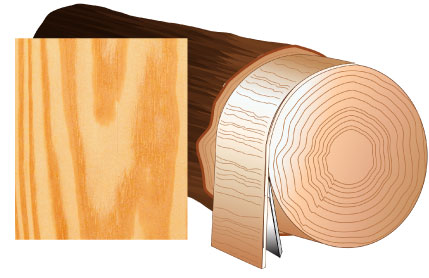
This method involves slicing a log with a knife. The way the log is positioned against the blade determines the final grain pattern.
Plain Sliced Veneer:
Process: The log is cut in half and mounted with the heart side against the slicer, with cuts made parallel to the center of the log.
Appearance: This cut creates the classic "cathedral" or "flame" grain pattern, which is highly sought after for its traditional look.
Benefits: It produces the highest yield of any slicing method and is a versatile, affordable option.
Best for: Doors, wall panels, and furniture where a classic, decorative grain is desired.
Quarter Sliced Veneer:
Process: A quarter-log is mounted on the flitch table so that the growth rings are perpendicular to the cutting blade.
Appearance: This method produces a straight grain with a ribbon-like or striped effect. In some species like oak, it also reveals a distinctive "flake" pattern.
Benefits: It creates a clean, elegant look, but yields less veneer than plain slicing.
Best for: High-end cabinetry, furniture, and projects where a uniform, linear grain is required.
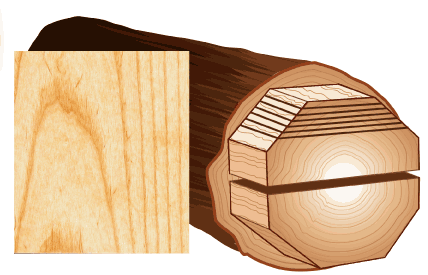
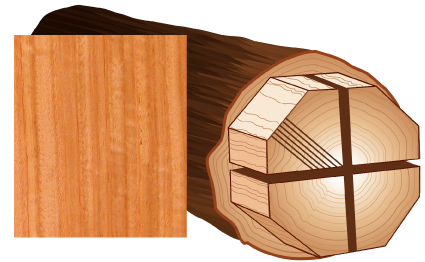
How it's done: A quarter-log is sliced at a slight angle to the growth rings, typically 15 degrees.
Appearance: This technique is primarily used for oak to produce a straight, striped grain pattern while minimizing the flake effect that can appear in quarter-sliced veneer.
Benefits: It results in a clean, straight-line aesthetic, making it a popular choice for modern, sleek designs.
Drawbacks: This method yields the least amount of veneer, making it the most expensive option.
Best for: Premium oak furniture and projects requiring a consistent, straight grain without the flake pattern.
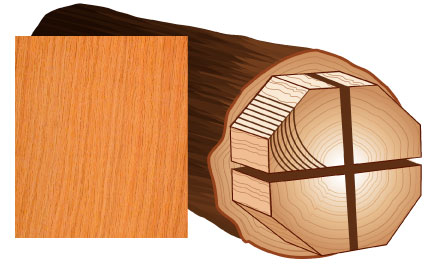
Rotary Cut: Ideal for large-scale, budget-conscious projects where a bold, random grain is acceptable.
Plain Sliced: Best for achieving a classic, traditional look with a beautiful cathedral pattern.
Quarter Sliced: Perfect for high-end pieces that showcase a clean, striped grain with unique decorative figures.
Rift Cut: The top choice for modern, straight-grained designs, especially with oak.
By understanding how each cutting method influences the final appearance, you can make an informed decision to select the perfect wood veneer to bring your vision to life.